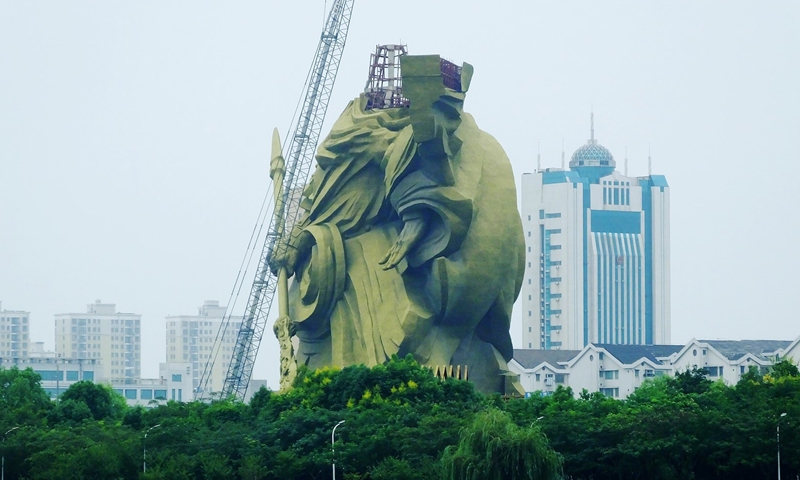Unless you’ve been living under a rock for the past 20 years, you’re probably aware that China has a thing for building huge and/or tall things. The skyscrapers have gotten the most attention, but did you know there had also been a massive boom in statuary? The Buddha (in the myriad forms) is the most popular choice, in keeping with the country’s resiliant Buddhist heritage, though the trend has certainly pushed the boundaries of good taste/spending. But all of the usual Chinese suspects are represented: Kum Yam, Tin Hau/Mazu, Guan Yu, etc. And of course, you’ve got the old guard resurrecting Mao here and there
Many are built with the money and initiate of local and business leaders. Unfortunately, they don’t always get all their Peking Ducks in a row (please laugh); if the eyesores generate too much negative press, the State has to step in and rectify matters. I give you exhibit B:
Chinese gov’t orders giant Mao statue demolished. https://t.co/RyX27htIHo pic.twitter.com/Nt0a98kLqC
— Steve Milloy (@JunkScience) January 8, 2016
Just FYI, “didn’t get government approval” usually means “it no longer has approval.” The latest deity to run afoul of regulations is Guan Di, aka Guan Yu, famed Chinese God of War and Dynasty Warriors main. You can find him pretty much everywhere in Greater China. He oversees most small businesses in Hong Kong, his fierce visage apparently a better guarantor of success and prosperity than even the God of Wealth. Heck, he is venerated by both law enforcement and criminals. He is super popualr, and the good folks of Jingzhou, Hubei just wanted to give him his due five years ago with this gloriousness:
Tragically, it was too awesome for many to handle, so last fall they began the government-ordered multi-million dollar process of disassembling and relocating it.

But Lord Guan is lucky to have somewhere else to go to. The fate of other Chinese statues in the Year of the Ox 2021 was much more ambiguous. A different sort of politics led to the dismantling of the “Pillar of Shame” in Hong Kong. It was a bit grisly for my delicate tastes, but it was nonetheless an important symbol of the freedoms the city once possessed:

Other symbols were taken down the very next day, and now sit in legal limbo in shipping containers somewhere. My beloved Hong Kong has born the brunt of the CCP’s wrath this past year, but other regions have suffered too. Mosques and cemetaries (and people) are disappearing in Xinjiang, and the authorities are allegedly dismantling Tibetan Buddhist statues in Sichuan as well.
So it’s been a bad year for statuary and other forms 3D expression in the Chinese world. The stated reasons for demolition/removal vary – poor taste, cost, horizonal obstruction, etc. – but they all imply an increasing trend of ideological control and micromanagement in the PRC. It’s truly sad, because a vibrant religious and political culture is being eroded, both literally and figuratively. If we cannot celebrate our deities with maximalist gusto, then we abdicate our precious soft power to Japanese gaming.
